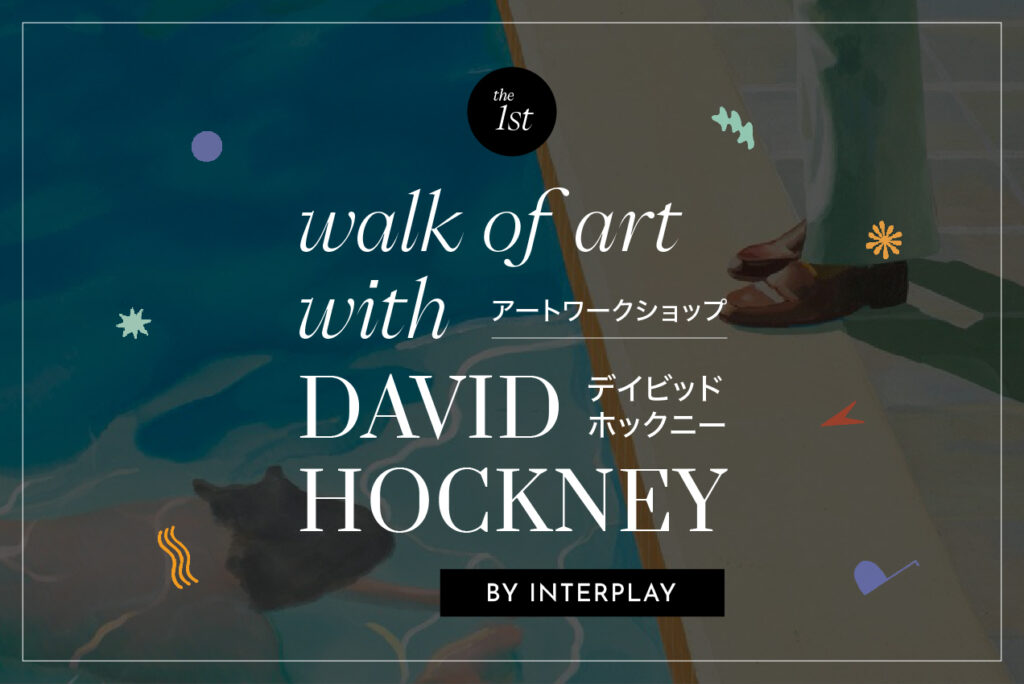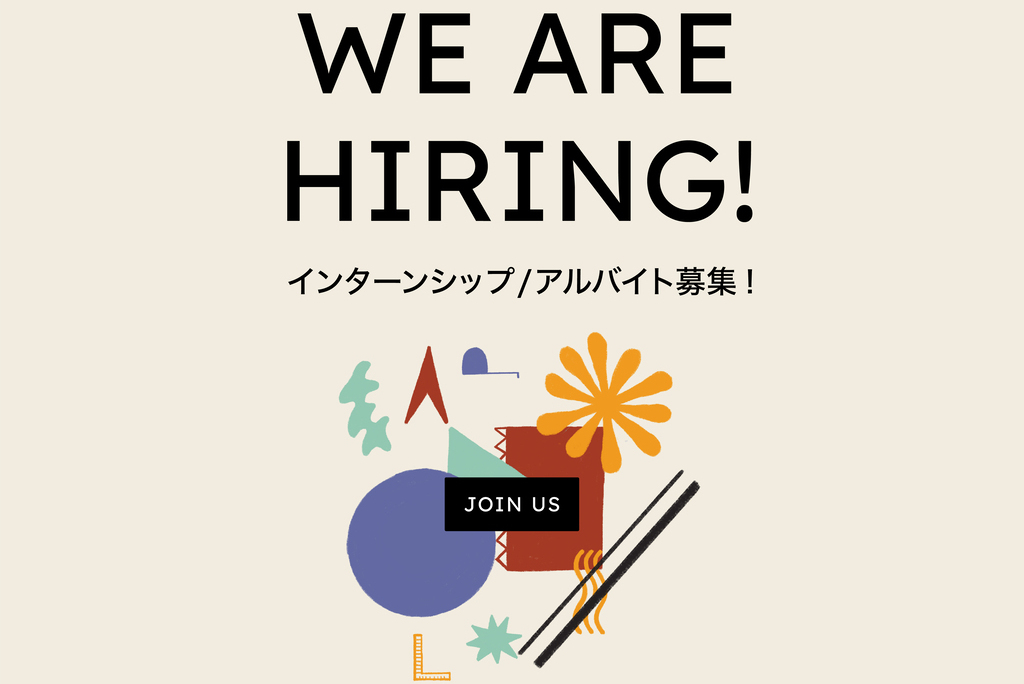Walk of Art with David Hockney
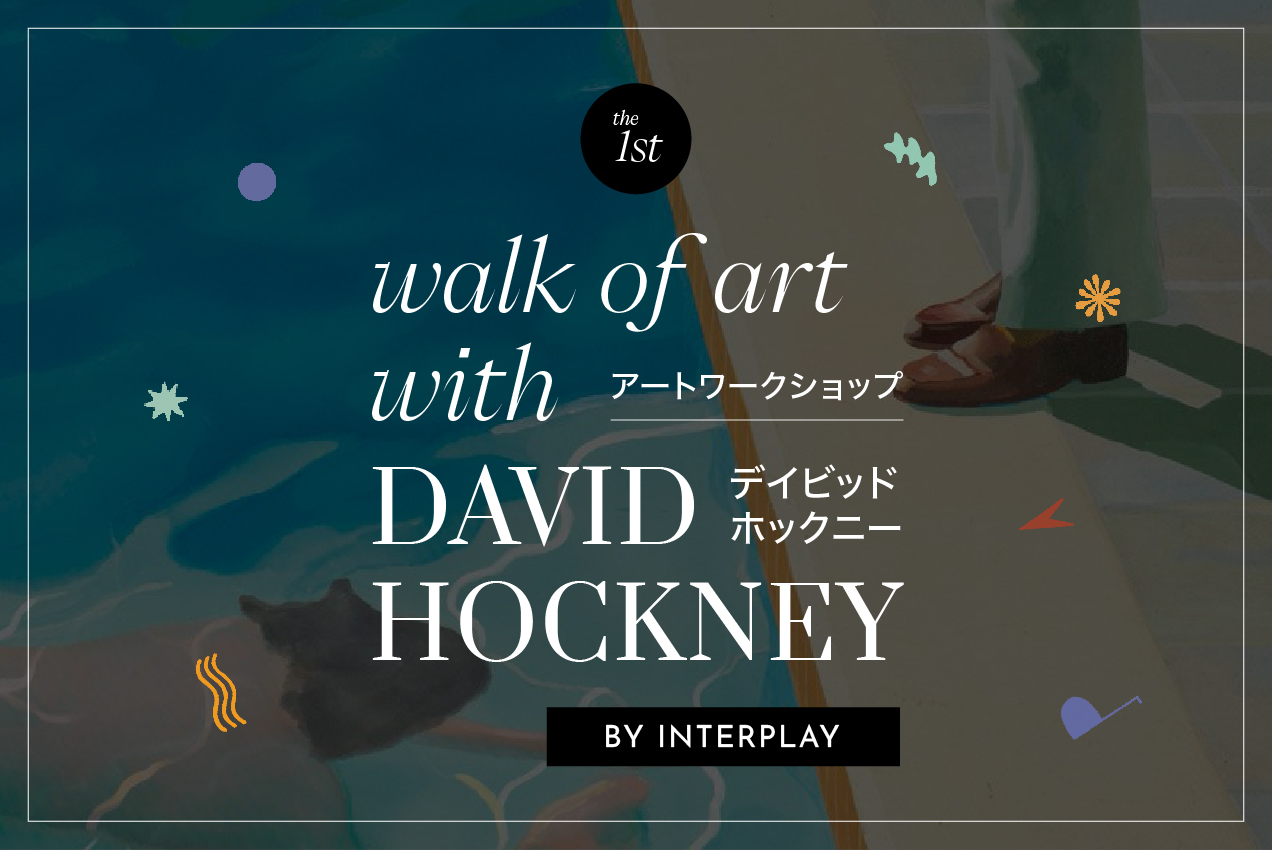
Art has a way of transcending boundaries, and at INTERPLAY, we set out to explore just how deeply it can inspire. The Walk of Art began as an inspiring field trip program, bringing our team together to spend a day learning through art and its masters.
For our inaugural journey, we explored David Hockney’s exhibition in the Museum of Contemporary Art Tokyo, immersing ourselves in his life, portraiture, and relentless pursuit of detail.
Let’s start with learning about his origins…
INTERPLAYでは、アートへの興味・関心から始まった「The Walk of Art」というフィールドトリッププログラムを企画しました。
第一弾では、東京都現代美術館で開催されたデイビッド・ホックニー展を訪れ、彼の人生、肖像画、そして芸術を通じて細部への妥協なき追求にどっぷりと浸る一日を過ごしました。
Chilhood and American Talkies
David Hockney, born in 1937 in Bradford, Yorkshire, grew up in a modest working-class family. Despite financial limitations, his parents prioritized education and dreams for their children. His father, for example, was a man of progressive ideals, opposed nuclear arms and smoking—uncommon stances in mid-20th century England. These values and an environment of open-mindedness shaped young David profoundly.
His dad used to watch “Laurel and Hardy” often on TV, an American Talkies comedy show led by a comedic duo. What got most attention of David wasn’t the funny cartoonish story-line of the show, but the environment of the sets, the intensity of the sun and the contrast of Light and Shadow of the American climate, very different to the English one he was used to.
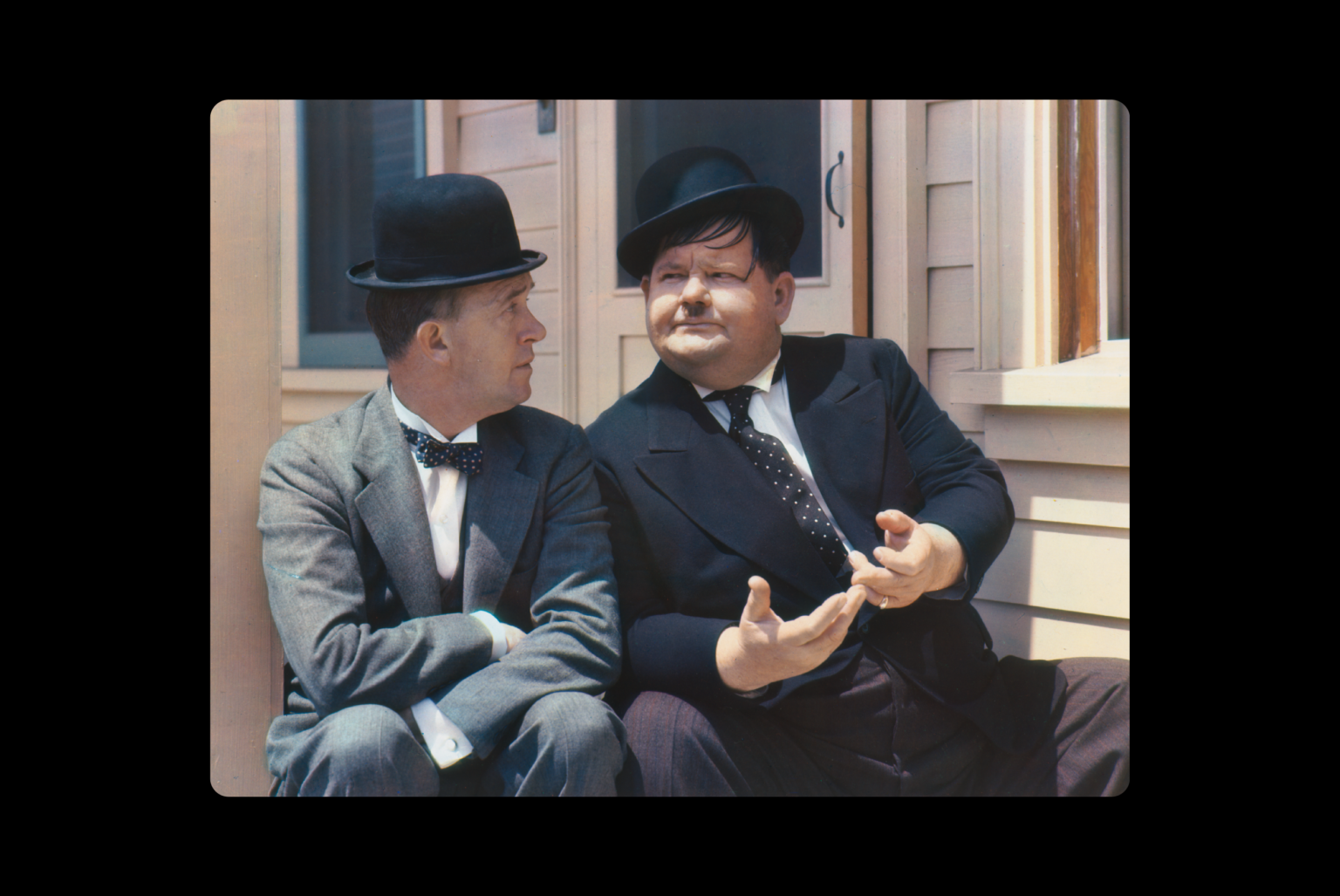
This fascination with light would later drive him across the Atlantic to sunny California, where he discovered the light and shadow of his imagination—and the countless pools that would define his artistic identity.
One of the first memories David has of Los Angeles, was actually right before landing; he saw the countless pools laid out beneath him, something he could’ve never seen in London. He was fascinated by the texture, the reflections, and what he enjoyed the most was to paint them.
Californian skies, palm trees, and swimming pools became recurring motifs in his work, seen in iconic pieces like A Bigger Splash, where the dazzling sunlight, crisp architecture, and serene blue waters evoke the hedonistic charm of California living.
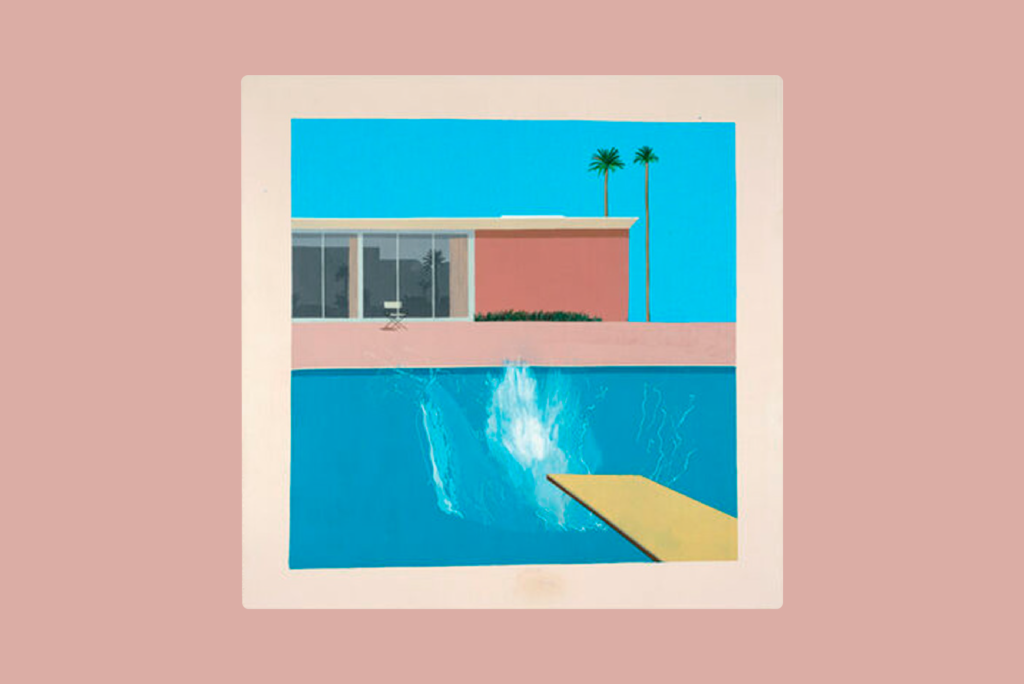
A Bigger Splash is one of his most famous paintings, where you can spot all typical Californian elements, like the blue sky, the palm trees and a director’s chair.
This culture of pools, prefabricated lines and Mid-Century architecture caught the attention of many artists during that time; even Japanese artists like Hiroshi Nagai, who I’m sure also took some inspiration from Hockney’s art style.
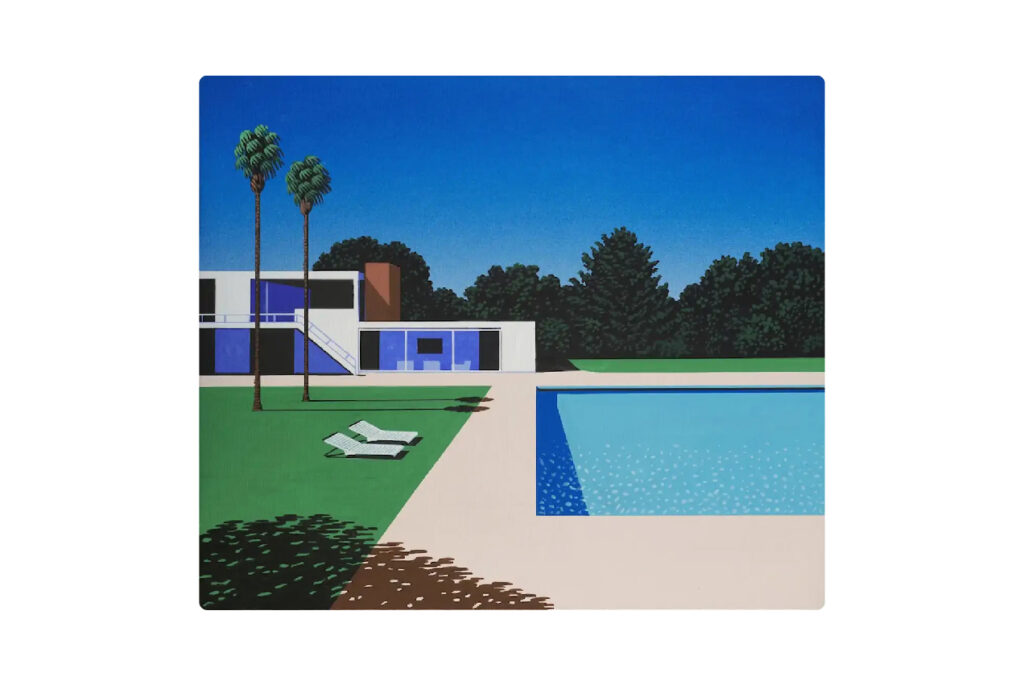
THE MOST EXPENSIVE ARTWORK
Hockney’s unique artistic style evolved from his experiences, merging personal moments with larger cultural narratives.
He often depicted themes of intimacy, such as in Portrait of an Artist (Pool with Two Figures), with an uncommon approach painting two figures in a composition where the tension between love and desire is palpable. Featuring his former partner Peter Schlesinger, who looks at another man’s figure underwater, representing what could have been the cause of their relationship to end: desiring someone else. This masterpiece became the most expensive work sold by a living artist, fetching $90 million.
While art dealers categorized him within the Pop Art movement, Hockney resisted labels. His work, deeply personal and reflective, transcended movements. He saw himself as an innovator, challenging conventions and embracing new mediums, from photography and fax machines to iPad sketches and even AI technology recently.
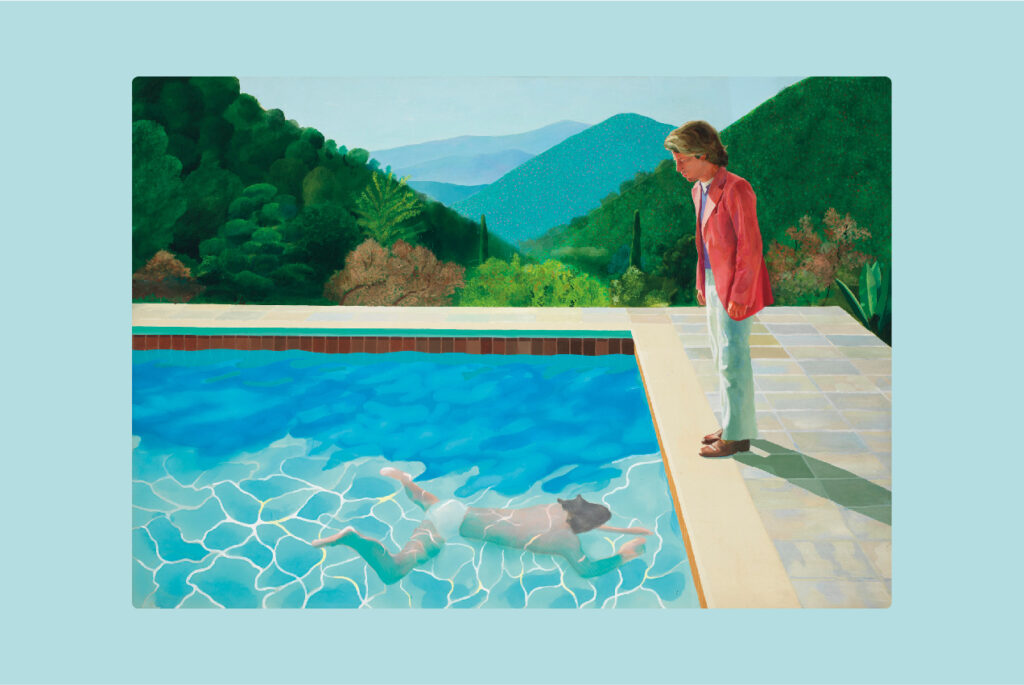
"Portraits are 20 hour exposures"
Hockney’s career is a testament to his boundless curiosity. He continually reinvented his approach, whether by exploring the immersive potential of panoramic landscaping or experimenting with digital tools in his later years. Notably, he described painting as a medium of timeless depth:
“Photographs capture a fraction of a second. Paintings, however, capture time itself.”
Portraiture also became a common method he’s liked to use to dedicate to his friends, family and celebrities; even the famous artist Harry Styles unveiled in 2022. He has always tried to capture something more than their appearance, managing to get the essence and the character of the models.
He also claimed that portraiture shouldn’t be an old-fashioned genre: artists have to strive to make it more current.
In his exhibit called “82 Portraits and One Still Life”, Hockney compared his portraits to photographs, calling them “20 hour exposures”.
The reason? Photographs have a fraction of a second in them. Drawings and paintings, of course, have more time, because it takes time to do it. Why not look longer at something?
“Paintings can’t die, because photography is not good enough, actually.”
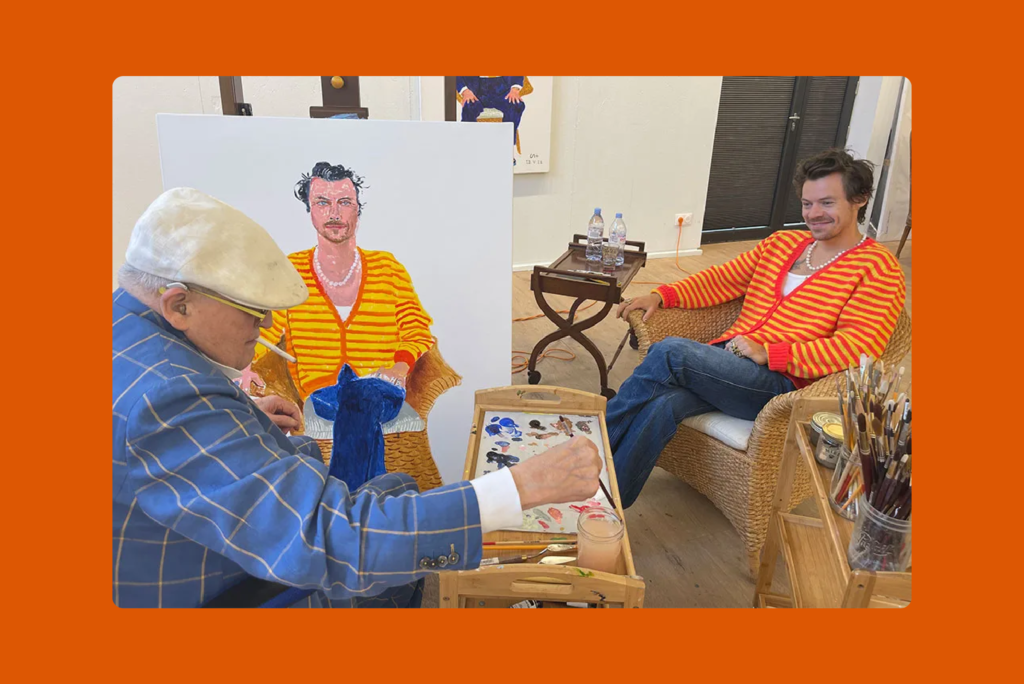
In the 1980s, he embraced fax machines as a means of creating art. He would send sketches and drawings to friends and collaborators using fax technology, which definitely was quite peculiar but innovative at the time. This allowed him to explore a new medium for his artistic expression and share his work over long distances in a unique way. Hockney’s willingness to embrace new technologies highlights his adaptability and openness as an artist.
These past years, he’s been trying different forms of landscaping, experimenting the dimensions of his works and changing the experience of the viewer: a normal size canvas makes us feel like we are looking through a window (the painting’s frame), but changing the format into a long panoramic paintings makes us feel like we’re being surrounded in the space, immersed in that painted scene.
Recently, a sudden seizure affected his ability to speak, but not to paint; his craving to paint made him shift to a new method of painting: his later works, including vibrant flower still-lifes created on iPads, showcase his ability to adapt and thrive while appealing to younger audiences.
LESSONS FROM HOCKNEY
Walking through Hockney’s exhibit reminded us at INTERPLAY of the power of observation. As Hockney once said:
“Most people don’t look much.
They scan the ground in front of them, so they can move around.
I’ve spent my life looking.”
Inspired by his relentless curiosity and innovative spirit, our team left the museum with a renewed perspective—not just on art, but on the act of seeing itself.
David Hockney’s art is more than color and form; it’s not about perfect perspective or precise proportions but about capturing the extraordinary in the everyday. His work invites us to go beyond the obvious and notice the subtle details that make life fascinating—from clouds shaped like animals and the pattern of a friend’s shirt to the tiny stones scattered along a park path. It’s a celebration of life, a reflection of the self, and a challenge to always seek light in the shadows.
幼少期とアメリカのトーキーズ
デイビッド・ホックニーは、1937年にイギリスのヨークシャー州ブラッドフォードで7人家族の3番目の息子として生まれます。謙虚な労働階級の家庭に育ちましたが、両親は子供たちへの愛情と将来への期待に満ち、適切な教育と強固な基盤を提供することに力を注いでいました。
デイビッドの父親は、当時は一般的だった核兵器やタバコなどに反対する進歩的な価値観を持ち、法律の改革を支持していました。これらの価値観は、デイビッドの幼少期に大きな影響を与えました。オープンで進歩的な家庭で育ったデイビッドは、幼い頃から自分が芸術家になりたいと確信していました。
最初のきっかけは、父親がよくテレビで観ていたアメリカのトーキー・コメディ番組「ローレルとハーディ」でした。デイビッドが特に注目したのは、番組の楽しい漫画のストーリーだけでなく、アメリカのセットの環境、映像シーンの日差しの強さ、そして光と影の対比でした。これらは、彼が英国の日常からは異なるものであり、数年後には光と影に対する彼の永遠の興味を追求するためにアメリカへの移住を決意することにつながりました。
ロサンゼルスの光へ
ホックニーが初めて見たロサンゼルスの着陸直前に、彼は無数の青い物体が広がっているのを目にしました。それはプールでした。この光景は、ロンドンでは絶対に見られないものでした。それからは、プールの質感、形、配置などを注意深く観察し、最も楽しんだことは、これらのプールを描くことでした。
「A Bigger Splash」は彼のもっとも有名な絵画の一つで、青い空、ヤシの木、そして監督の椅子など、典型的なカリフォルニアの要素が一つの絵にギュッと抑えられています。
プール、プレハブライン、そしてミッドセンチュリーアーキテクチャの文化が多くのアーティストの注目を集めたと思います。日本で活躍している永井博氏も、おそらくホックニーのアートスタイルからいくつかのインスピレーションを得たと思っています。
彼の作品には2つの人物を構図に描く共通のアプローチがよく見られます。その代表的な例が、彼の有名な作品「画家の肖像(プールと二人の人物)」です。この作品では、画家ピーター・シュレジンガーと、ホックニーの元恋人でありミューズであった人物が水中の別の男性を注視しています。この構図は、彼らの関係が終わる原因かもしれない、他の誰かへの欲望を象徴しています。
この作品は9,000万ドルで売却され、生きているアーティストの作品として最も高額で取引された作品となりました。
“ほとんどの人は周りをあまり見ていません。
目の前のこといっぱいで、あまり考えずに歩いています。
私は人生ずっと見つめながら歩んできました。”
肖像画は、アーティストが好んで使用する一般的な方法であり、彼はこれを広範に活用しました。アーティストの母親、親戚、テキスタイルデザイナーのCelia Birtwellから有名なアーティストHarry Stylesまで、幅広い人物を描きました。肖像画を通じて、外見以上のものを捉える努力をし、人物の本質と性格を成功裏に表現しました。また、肖像画が時代遅れな表現方法であってはならないと主張し、アーティストはそれをより現代的にするための努力を欠かしませんでした。
彼の展示「82 Portraits and One Still Life」では、ホックニーは自身の肖像画を写真と比較し、「20時間の露光」と表現しました。写真には瞬間の記録しか含まれませんが、描画や絵画は時間をかけるため、モデルとアーティストとの関係性、性格、交わる会話などが作品に組み込まれています。
“絵画は絶滅することないでしょう、
まだまだ写真だけでは十分ではないからです。”
新しい技術にいつも興味と関心を示すホックニー
1980年代には、当時は革新的だったファックス技術を使用して、スケッチやイラストを友人や同僚に送りました。これにより、彼は自分の芸術表現の新しいメディアを探求し、作品を遠距離でユニークな方法で共有することができました。ホックニーが新しい技術を受け入れる意欲は、彼のアーティストとしての適応力と創造性を示しています。
近年、彼はさまざまな風景の形式を試し、作品の寸法を実験し、観客の体験を変えています。通常のサイズのキャンバスは、窓(絵のフレーム)から景色を見ているように感じさせますが、長いパノラマの絵画にフォーマットを変更すると、私たちはその空間に囲まれ、描かれたシーンに没入しているように感じます。
今でも、絵を描く能力には影響を与えませんでした。絵を描く欲求は、彼を新しい絵画方法に切り替えさせました。iPhoneとiPadでのスケッチで、最近の花をテーマにした静物画は新しい世代の間で大きな人気を博し、今はAI技術でも挑戦した作品を手掛けています。
レビュー:鮮やかな人生と光に満ちた創造
ホックニーの作品は、ただ観るだけでなく、まるで彼の世界に包み込まれるような没入体験を提供します。巨大なパノラマ形式の風景画では、観客は単なる観察者ではなく、その中に立ち入る感覚を味わうことができ、そして、ホックニーが放つ普遍的なメッセージに触れられるでしょう。それは、「見る」という行為への飽くなき探求であり、彼自身が語るように、「絵画は写真では表現しきれない時間と感情をもたらす」という真理を感じる作品だと思います。機会があれば、いつか光と色彩が織り成す彼の芸術の奥深さをぜひ体感してみてください。
Biography
theCanvas:https: https://www.youtube.com/watch?v=aZ6IK8UmcZM&ab_channel=TheCanvas
BBC: https://www.youtube.com/watch?v=R-0UXBcjlRY&ab_channel=G%C3%B6ktu%C4%9FDemir
Podcast: Nushi Muntaabski
Podcast: Royal Academy of Arts – An Introduction to David Hockney



